Seems like FiiO have finally remembered they have dynamic headphones and have instantly come with a FD5 hit, who appealed to many people, including me. I have thought of all the rest their headphones as “normal”, being spoiled by more expensive variants. No, FiiO offerings are really good, but not good enough to impress me. But FD5 have really nailed it. Both with sound and design, that is slightly unusual for dynamic model. Even more, it is semi-open, that is not too usual for portable use. Luckily there hasn’t leaked too much sound both inside and outside. The non-symmetric grille on the outer part has been interesting as well. But first of all, it’s only appearance, secondly, it works really well, and thirdly — lets finish the talk about FD5 and move to FiiO FD7.
Accessories and packaging
And the headphones meet us… Well, no, we are met by the box with dust cover. It’s really beautiful. Colorful enough, and it is clear that the designers have been working on it or some time. This is not your average box.

Of course, it’s just a box and not headphones themselves, but it provides needed emotions during the unpacking process, and it’s a plus.
The dust cover is black and sports a large headphone image and its schematic drawing. We see the same kind of drawings on side as well. The model and company name are printed in silver letters. Not vulgar, and really beautiful.
There are no specifications on the back, probably to make people read less and unpack the box quickly. There, however, is the booklet inside the box.
The appearance of the box is similar to previous model. The black box with small sparkles and silver thin lines of headphone sketch. We’ve seen it before and it looks good.
The insides of the box are similar as well. It’s practically the same we’ve seen in FD5. Apart the headphones we get a booklet, but there are no specifications in it as well.
Right below the flap there are headphones themselves in their places in a foam material. To the right of them we get a brand pouch, while interchangeable nozzles are to the left. Now there are three of them and we also get annotation to know what’s what. The narrowest one is for bass, the widest one is for highs and the average one is for mids. There is also the second bottom that sports quite a bunch of accessories.
There is a cleaning tool, couple of jacks and magnet clamp that can be used to store cable, but even more likely to attach it to the t-shirt.
To the left of all of this is a whole block with ear tips.
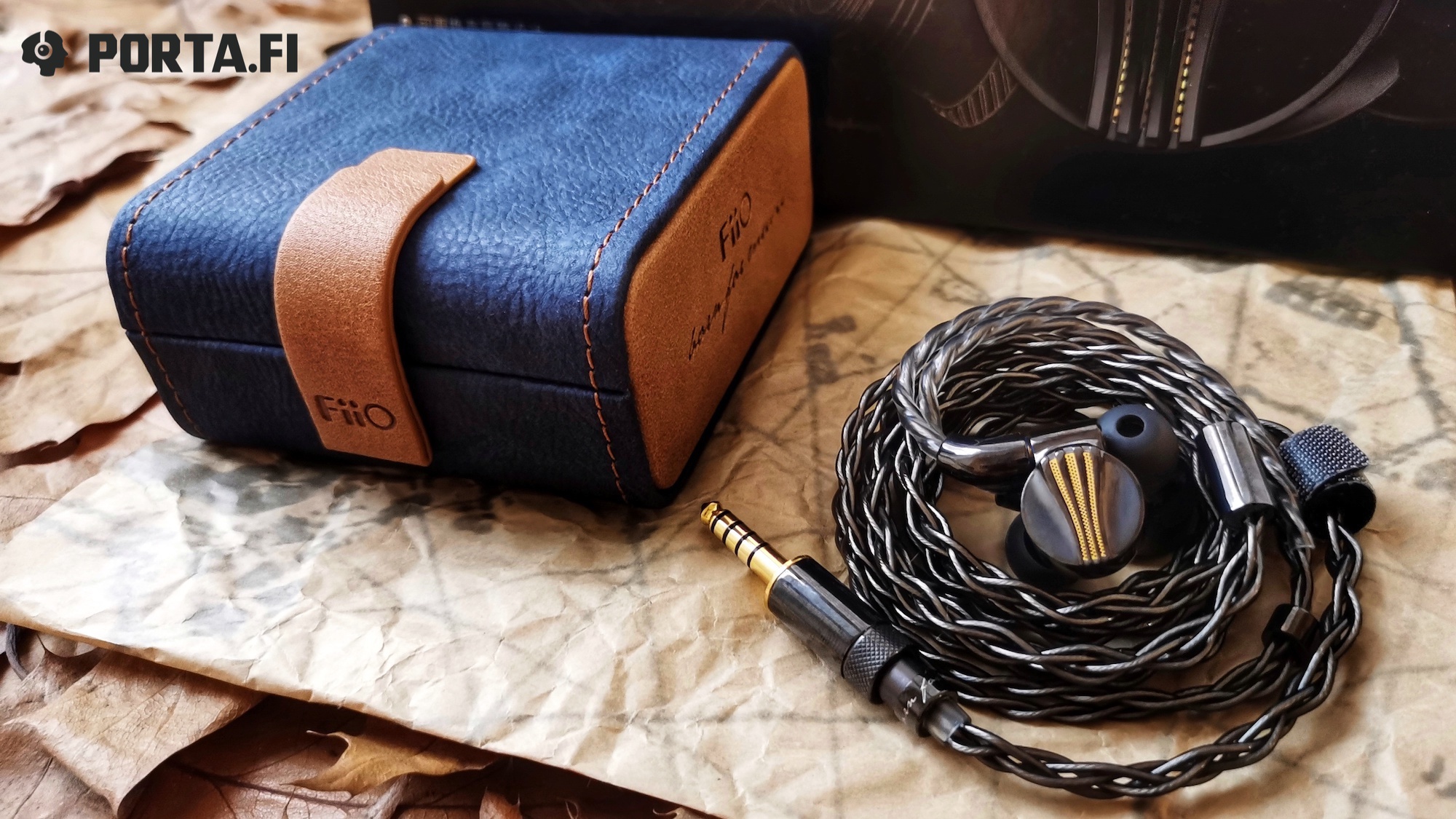
There are 3 sizes of SpinFits, two sizes of three-flanged and balanced (extra pair is already applied to the headphones), and two pairs of foam tips of medium size. Also there are sets (of 3 sizes) of vocal and bass tips, so you can get what you need according to your taste. I’ve been satisfied by the ones that have already been applied to headphones.
Cable
Cable is pre-attached to headphones out of the box. Here we have a high purity silver and the manufacturer promises 224 litz strands. I haven’t counted them, but I believe the manufacturer. I don’t think the cable will become dark, but to take this possibility into account, the manufacturer have covered it with dark isolation with almost no transparency. It’s not an audiophile calibre, the cable is braided from four cores until the splitter and spirally after the splitter. It’s good that the splitter and clamp of the cable are compact. The connectors of the headphones are rather massive, angled (45 deg), black as well, right in the style of headphones. The cable uses MMCX connection that are improved greatly.
There is a precise audible click when connecting cable to socket in headphones. You can turn the cable inside the socket but this is more a feature than a problem now and helps to put the cable in comfortable directions.
The insertion is very firm and now you will probably need a tool to detach it, I haven’t been able to do it without such tool.
The MMCX standard haven’t changed a lot and I have managed to check several cables apart of stock ones. All of the cables fitted well and the grip has been very firm. So, the work in this direction is clear and welcome. The manufacturer says the connectors are made of stainless steel, but I don’t know what part is really made of it. Probably the shells, since steel is not the best conductor.
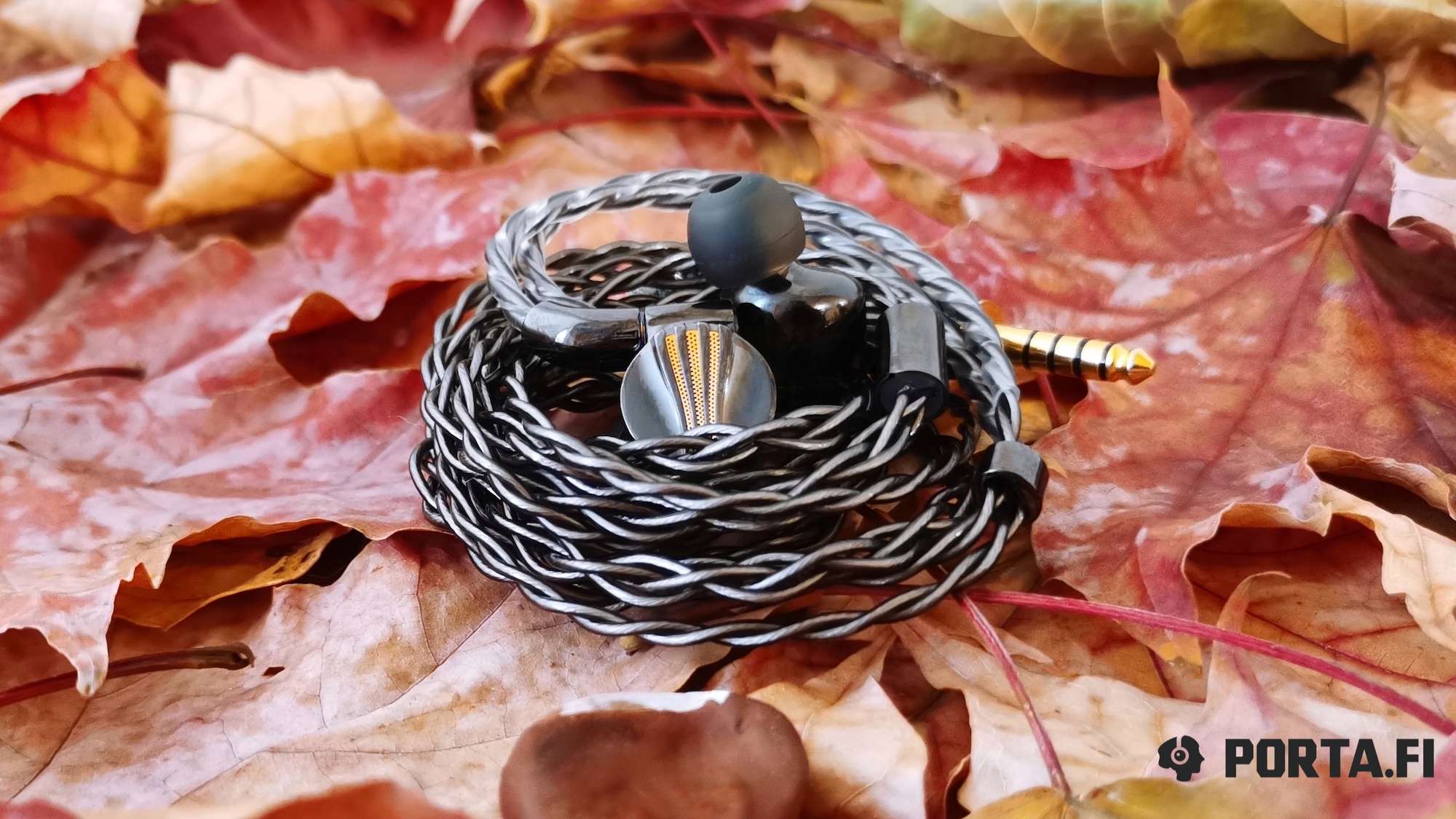
From the part of the source there is a brand system that resembles of straight compound connector. The jack itself is the middle of the system while the body is a fixating tool with screw thread. There is a guideway to help with installation of needed jack that is then fixed in place. It takes less than a minute to do so, and is reliable and simple thing.
The connector is straight that is not always convenient during the portable use. However, even given its modular design, it’s not too large. The cable fits the headphones well in terms of design. Almost black isolation with the same furniture, so it’s good here as well.
Design and comfort
If you’ve seen FD5, you’ve seen FD7. The difference is very slight, the body is similar and is different only in color, with the same approach. The body has a glossy circumvent shape and matter front panel with brand projection in the shape of fan. There is a grill right below it. It has gold color, while the body is black. The anodized coating looks interesting, like jewellery. It is rather practical.
The overall appearance is great. I’m not a fan of gold color, but there is no abundance of it and it looks classy. The only downside for me are the glossy elements. They do not look bad by all means, but they are obviously a fingerprint magnet, so it will be hard to take a photo without fingerprints.
Ergonomically the headphones have a shape of cylinder of not too large diameter. The nozzle goes out at a correct angle so I haven’t encountered any complaints for fit. The nozzles are detachable, but of course there are limits. For example, if you get wide nozzle, it will of course influence sound, and pretty any combination will, so the choice in terms of fit is more theoretical.
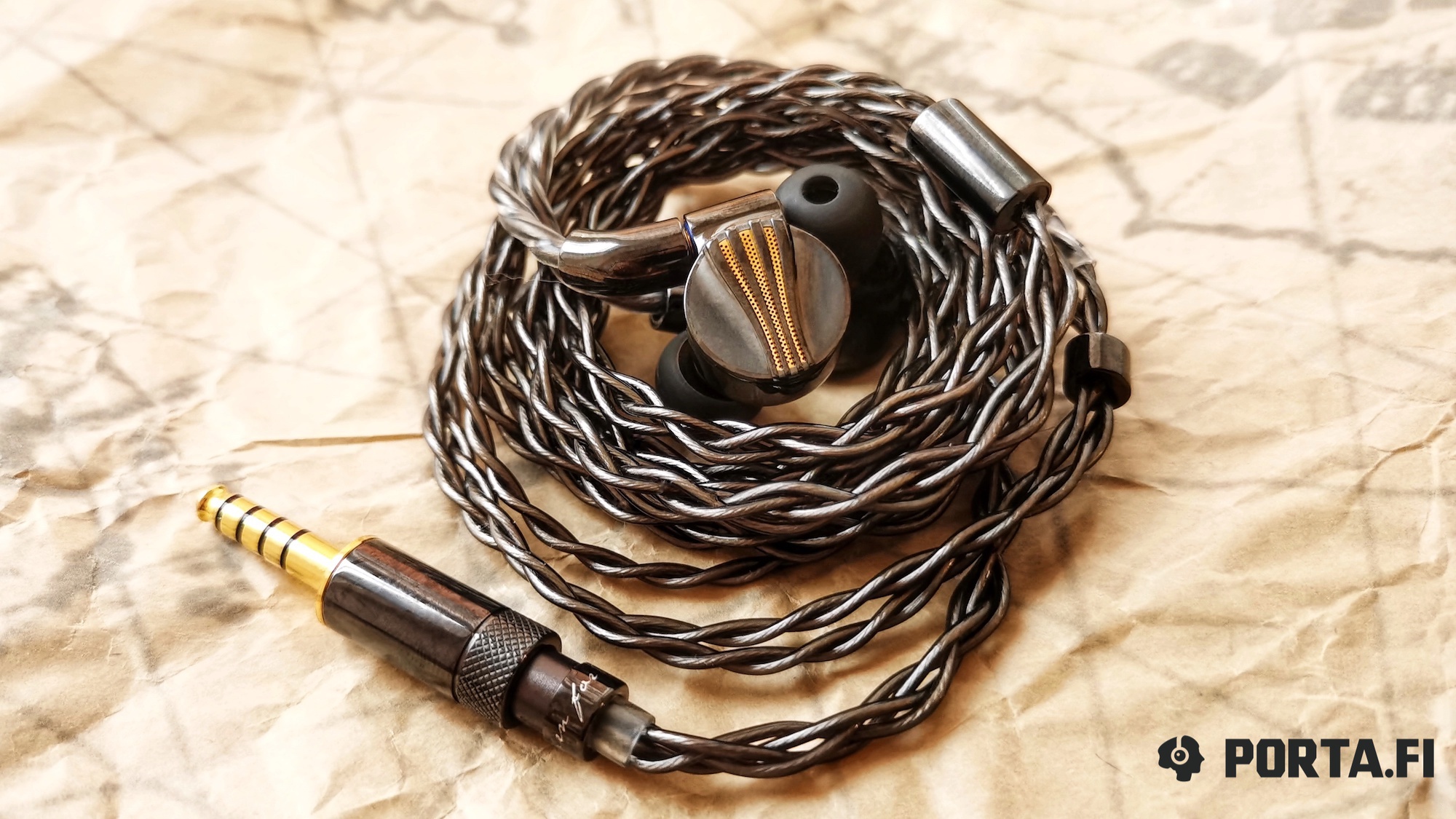
Sound
I have made comparisons with junior model and if it fits you in terms of sound, you can consider 7th model an ideal successor. Of course the difference is not night and day, but it is clearly there, in terms of tone and presentation. Highs are better, bass depth is better, dynamic range is better, soundstage — better again. There is a bump in every aspect, and cumulatively they are better than 5th. But how do they sound?
If we speak about the most neutral (or mid-centric) filters, this is a very balanced model. It has great level of details, speed and technicalities and it is a great plus. But the model doesn’t emphasize it. First of all, the sound is natural, melodic and musical.
Of course those definitions are usually used when we want to say that the sound goes more into macro details, but here we have a good balance with slight emphasis on macro details that is very light and accurate.
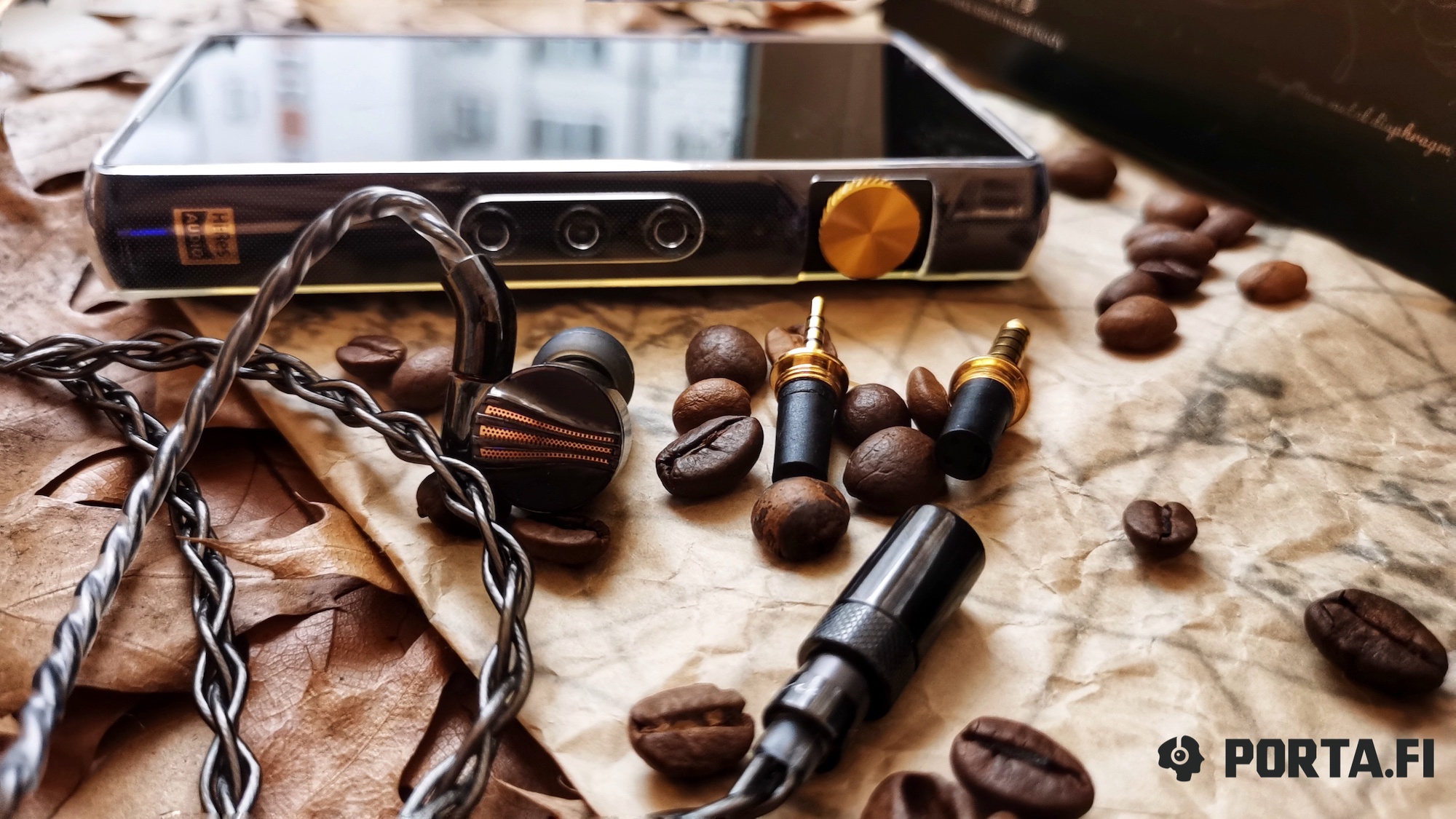
These iems have great technical ability. They are quick, precise and detailed, but there are couple of moments. First of all, the presentation is not overly dry, which means the details are not only there as data flow, but have good weight, preserving size and character.
Secondly, FH7 have good dynamic range. This does not only mean that they play well both on high and low volumes. This means that all the details and nuances know their place on sound canvas. They are well transmitted and are distinctive, but also sound whole and organic. These details, like building blocks, comprise large musical canvas. This means that the input of each building block is neither dramatized, nor neglected. Great balance, when you have both emotions and technical things.
Frequency response tends to be neutral. IEMs treat the recorded material well and shows its peculiarities. There is a very slight emphasis on the borders of the frequency range, but the sound is more W-shaped or very-very slightly v-shaped, if you want to find accents. But in reality the presentation tends to be flat and honest.
If you want to add some highs or lows it is enough to change filters, but I wouldn’t do so because there is a clear tradeoff between quantity and quality. For example, there can be more highs but the dynamic range is diminished and we get more piercing aggressive sound with notable and even abundant sharpness. Of course they won’t still be too bright, but highs will become more sharp and will lack smallest nuances and sound peculiarities.
As for bass, it is even worse. Of course you can have much more bass in quantity, but its quality, control and precision will suffer, but who knows, maybe it is better for someone.
If I wanted slightly different sound, I’d better began tip rolling.
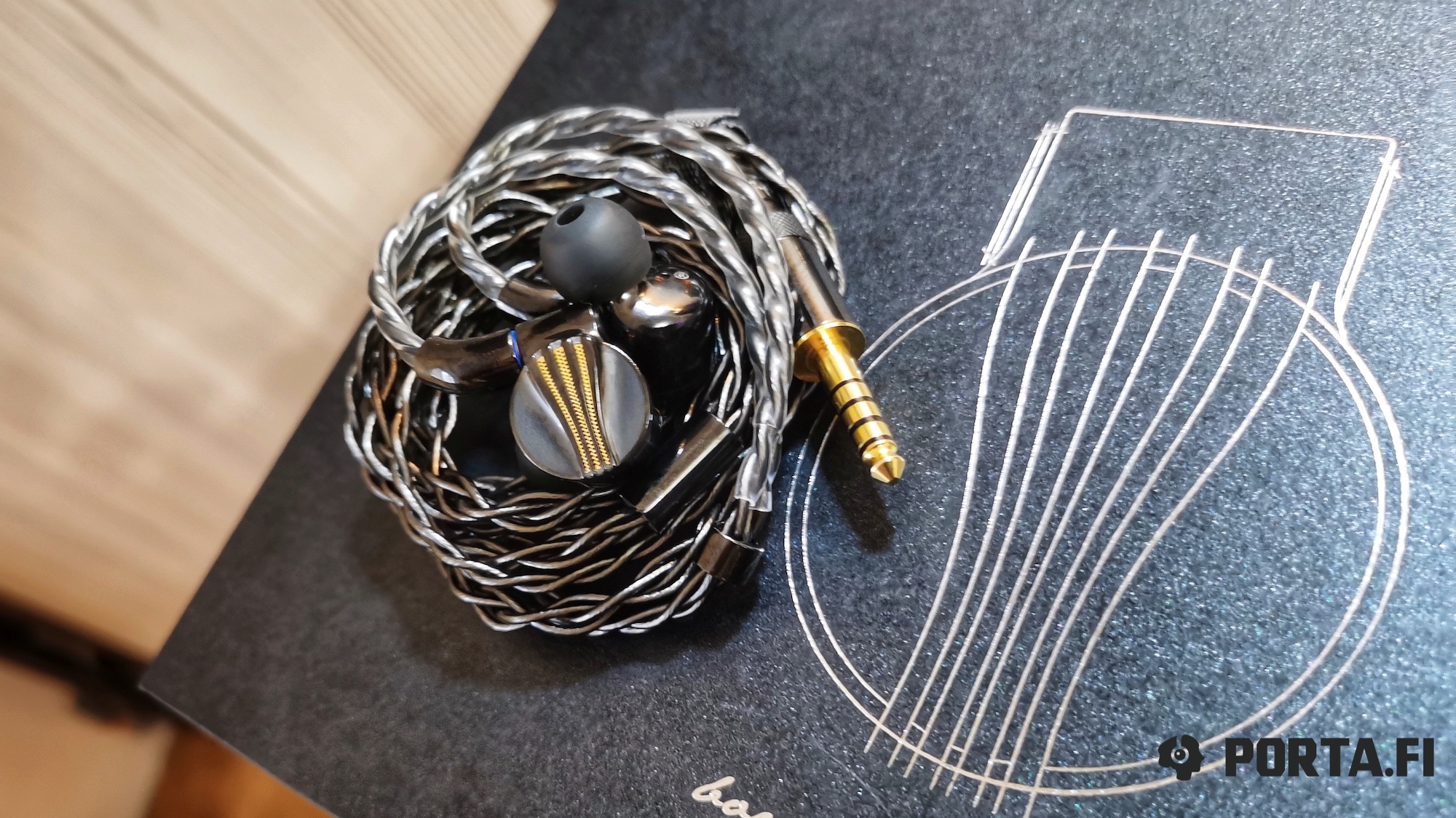
Lows
This is a rather whole and thick presentation with slight warmth. With that said, there is great extension and control up to the lowest levels. Slams have good shape, are textured and preserve character, and all this sounds very organic with the rest of the canvas. There is a good amount of midbass and subbass is not lacking as well. I can’t say there is plenty of it, but enough to provide slams with needed weight and scalability. At the same time the control and wholeness allow IEMs to cope with live recordings well, making them neither clumsy nor massive.
There is slight warmth that helps to transmit emotions while preserving good technicalities, wholeness and musical level.
Mids
Mids preserve the same character and good micro and macro details level. As intended, macro details take the lead, but then, when you begin to note details, you understand that they are not just formal, but have great quality and correct place in the composition.
This ensures great and organic musical canvas, as intended. The headphones have good level of details, but they do not sound separate.
There’s also some warmth that provides distinctiveness and naturalness. Vocals and strings sound very convincing.
In terms of speed, precision and nuances, as well as timbres, everything is great. It has been good in FD5 and is better here.
Highs
Here’s the level of details for people. That’s what we want to say about FD7. As a rule highs are required to have good speed and technical ability. They tend to have great deal of details and that’s why many headphones emphasize it by mixing the 1st and the 2nd musical row.
Here everything is good in terms of speed, level of details and technicalities. First of all, FD7 do not have too much sharpness. Secondly they have good weight on highs as well as level of details. Finally, good dynamic range plays its role in instrument positioning and imaging. Of course the background instruments do not appear from nowhere and do not take too much attention, leaving it for soloists.
The attacks are quick and shapy, but I can hear very slight smoothing of peaks for better comfort, that is however not too critical. There are no problems with decays too. They have correct length, lightness and naturalness.
Highs sound lengthy and therefor have good positioning, airiness.

Soundstage
Let’s talk about soundstage here. It can be very large if needed. It’s width and depth are above average and there are several key moments to understand it. There is a correct ratio of width towards depth. This means that the soundstage does not become a narrow and deep tunnel as well as wide field.
The soundstage is not carved in stone. Depending on composition it can be either compact or wide. Anyway the 1st row is very important in composition. Mids have very good distinctiveness and sound convincing mainly because of this kind of soundstage. Good layering and separation make composition a whole while providing needed intersections.
FD7 never has a shallow soundstage. This means that there is not too much air and the sound is always saturated.
Nevertheless the separation is very good, I would say it is emphasized, but very very slightly. The dynamic range allows to reproduce the recording atmosphere correctly. Soloist usually gets more attention.
Criticalness to the quality of recording
Here we get another big plus. Sounding very whole and having slightly smoothed highs, FD7 are more tolerant to the quality of recording than they might be. Of course they will show problems of mastering, but will not render such recording unlistenable. They allow to listen to good demo-recordings, as well as live recordings, while showing much better progress and sound quality for well-mastered composition.
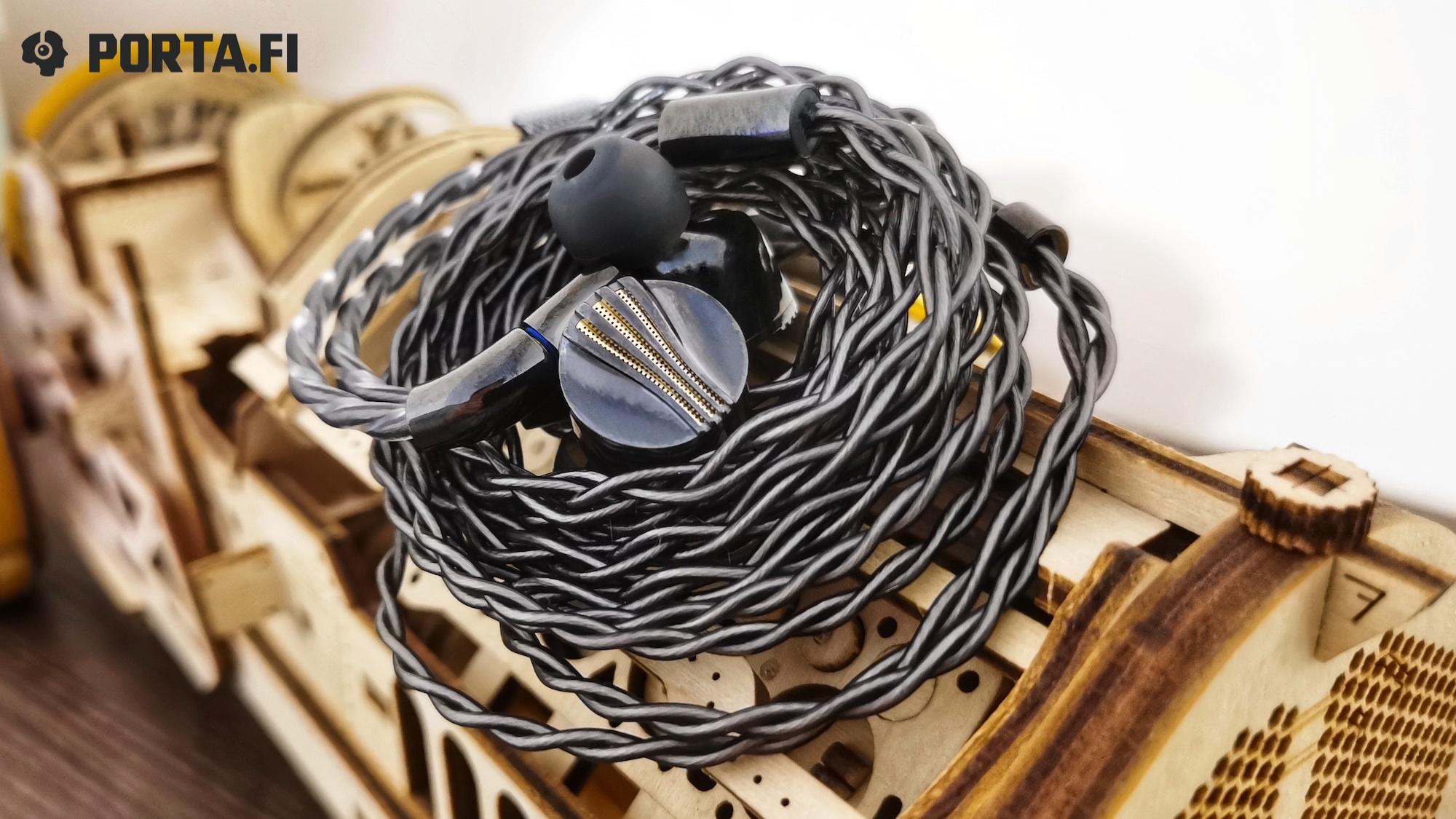
Conclusions
FD7 are ideal candidate to upgrade from FD5, overcoming them in all areas (not by big margin, but still). The choice between them is obvious. 7s are good example of how you may not stop on a good model and make it even better.
This is not to say that FD5s are not good, but the choice is obvious.
Is the upgrade worth the money? Everybody decides by himself. If you want 5s but better, then yes. If you want something very different — no. On the other hand, the character and presentation of 7s doesn’t make their sound too peculiar and you don’t need to listen to 5s to understand the sound. Those who like close to neutral but not dull presentation, will value this model.
Translated by: Vadim Kolchev

